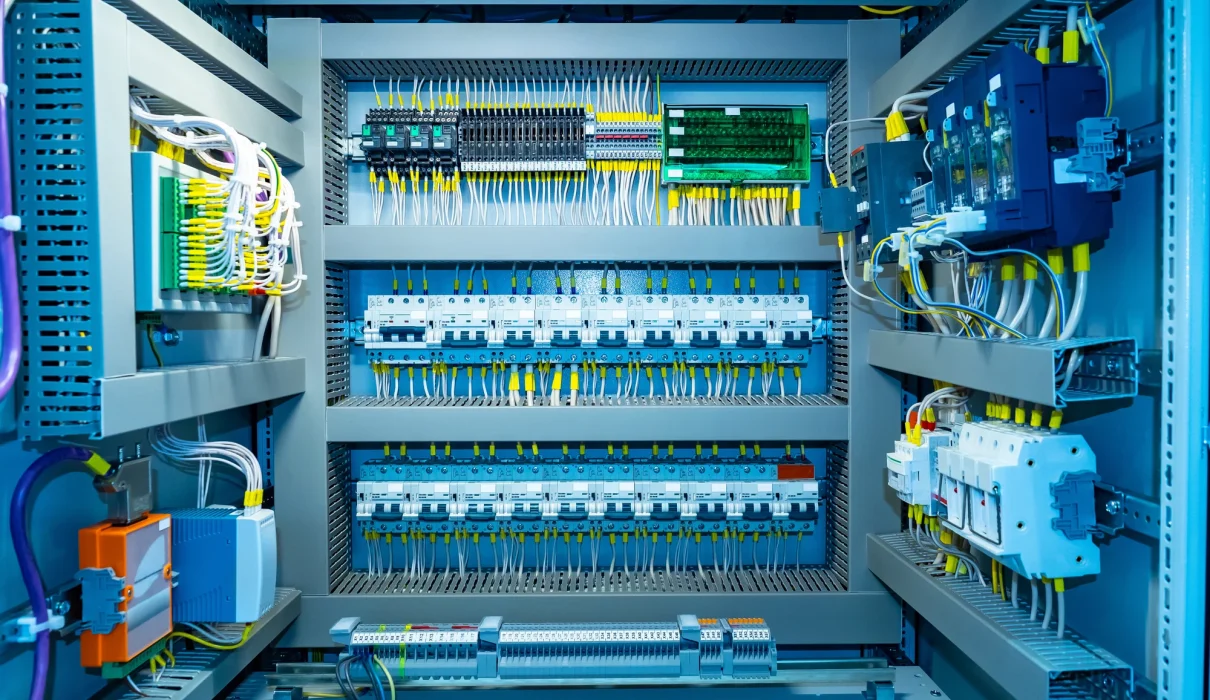Direct Digital Controls (DDC) systems are revolutionizing building automation and HVAC (Heating, Ventilating, and Air Conditioning) systems by providing precise control, monitoring capabilities, and energy efficiency. In this comprehensive guide, we explore everything you need to know about Direct Digital Controls (DDC), from their functionality and benefits to their applications in various industries.
Understanding Direct Digital Controls (DDC)
Direct Digital Controls (DDC) refer to electronic devices that use digital communication to manage and control mechanical systems, including HVAC systems, lighting, and more. Unlike traditional analog controls. DDC systems offer advanced features such as real-time monitoring, automated adjustments based on environmental conditions, and integration with other building systems.
Key Components of Direct Digital Controls (DDC) Systems
- Sensors and Actuators: Sensors measure variables like temperature, humidity, and pressure, while actuators adjust system components based on input from sensors.
- Controllers: DDC controllers process data from sensors and send commands to actuators to maintain optimal conditions within a building.
- User Interfaces: Interfaces allow users to monitor system performance, set parameters, and receive alerts or notifications.
Benefits of Direct Digital Controls (DDC) Systems
- Energy Efficiency: DDC systems optimize energy usage by adjusting HVAC and lighting systems based on occupancy, time of day, and environmental conditions. This leads to significant energy savings and lower operational costs.
- Improved Comfort and Air Quality: Precise control over HVAC systems ensures consistent comfort levels and enhances indoor air quality by efficiently managing ventilation and filtration.
- Remote Monitoring and Control: Facility managers can monitor and control DDC systems remotely through web-based interfaces or mobile apps. This capability facilitates proactive maintenance, troubleshooting, and response to system alerts.
- Integration with Building Automation Systems: DDC systems seamlessly integrate with other building automation systems, such as security, fire alarms, and access control, enhancing overall operational efficiency and security.
- Scalability and Flexibility: DDC systems are scalable and adaptable to different building sizes and types. They can accommodate future expansions or modifications without requiring significant infrastructure changes.
Applications of Direct Digital Controls (DDC)
- Building Automation: DDC systems are widely used in commercial buildings, hospitals, and educational institutions. And retail spaces to automate and optimize HVAC and lighting systems.
- Stand-alone Controls: DDC technology also finds applications in stand-alone control systems for specific equipment or processes. Providing enhanced functionality and efficiency.
- Traffic Control Systems: In Intelligent Transportation Systems (ITS), DDC plays a crucial role in managing traffic signals, variable message signs, and other traffic control devices to improve traffic flow and safety.
- Intelligent Transportation Systems (ITS): DDC technology enhances efficiency and safety in transportation networks by integrating with traffic management systems and infrastructure.
Understanding BACnet Building Controllers
BACnet (Building Automation and Control networks) is a communication protocol commonly used in DDC systems. BACnet Building Controllers facilitate interoperability between different devices and systems within a building, enabling seamless communication and integration.
HVAC Products and Technologies in Direct Digital Controls (DDC)
- Variable Air Volume (VAV) Systems: DDC systems optimize VAV systems by adjusting airflow based on demand. Improving energy efficiency and comfort.
- Chilled Water Systems: DDC controls chilled water systems to maintain precise temperatures, reducing energy consumption and operational costs.
- Air Handling Units (AHUs): DDC systems monitor and control AHUs to optimize air distribution. Filtration and humidity levels for improved indoor air quality.
Future Trends and Innovations in Direct Digital Controls (DDC)
- Integration with Smart Grids: DDC systems are evolving to integrate with smart grids. Enabling buildings to participate in demand response programs and optimize energy usage based on real-time grid conditions.
- Artificial Intelligence (AI) and Predictive Analytics: AI-powered DDC systems analyze data to predict equipment failures. Optimize energy consumption and improve system performance over time.
- Advanced User Interfaces: Enhanced user interfaces with intuitive dashboards and data visualization tools provide actionable insights for better decision-making and system management.
Conclusion
Direct Digital Controls (DDC) systems represent a significant advancement in building automation technology. Offering unparalleled benefits in energy efficiency, comfort, and operational efficiency. By leveraging DDC systems, businesses and organizations can optimize their building environments, reduce costs, and enhance overall productivity.
At Viasion, we specialize in providing cutting-edge DDC solutions tailored to meet the unique needs of our clients. Whether you’re looking to upgrade your building automation systems. Improve HVAC efficiency or integrate advanced technologies like BACnet controllers; our expert team is here to help.
Contact us today to learn more about how Direct Digital Controls (DDC) systems can transform your building operations and drive sustainable growth in the era of smart building technology.
For expert guidance on implementing Direct Digital Controls (DDC) systems and optimizing building automation, contact Viasion. Our team is dedicated to enhancing your facility’s efficiency and comfort through innovative DDC solutions.
Read More: Direct Digital Controls (DDC) Explained: Everything You Need to Know | Viasion

